How is the cultivation and harvesting of corn for silage: the secrets of agricultural technology from sowing to storage of the crop
Silage is one of the conditions for creating a solid forage base for animal husbandry. One of the most easy-to-feed crops is corn. Green corn silage has the highest energy value compared to other similar feeds. One kilogram of canned green mass contains up to 10% of the daily requirement of dairy cows for carotene, which is of great importance for health and productivity.
How to grow corn for silage, in what time frame, how to preserve the maximum benefit of green mass - you will find the answers to these questions in the article.
The content of the article
What is silo
Silage is a juicy forage made from fresh or dried green mass... This type of feed is obtained by fermentation, mainly lactic acid, in anaerobic (without oxygen) conditions.
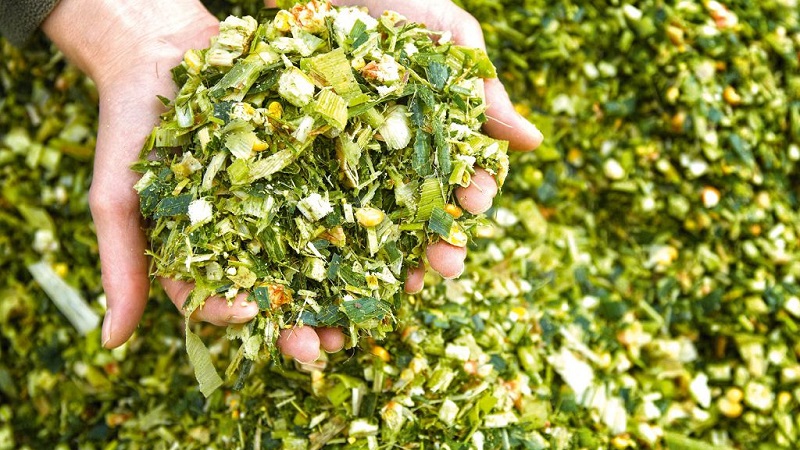
Correctly harvested silage has fruity smell or smell of pickled vegetables, non-smudging texture.
Important! Slime and mold in juicy feed are unacceptable.
Silage, like other succulent forage, contains 60-80% moisture... But this is not just water, but a living solution containing vitamins, minerals, which has a general strengthening effect on the body of animals.
Green mass enriches the ration of livestock and makes up about 50% of the total nutritional value of feed. Use of the product in animal nutrition satisfies the following needs:
- normalizes the work of the digestive organs;
- accelerates weight gain during fattening;
- increases the amount of milk yield.
Suitable varieties and hybrids
Hybrids and varieties of corn intended for silage, must be highly productive, suitability for mechanized harvesting, suitable for growing in a specific region.
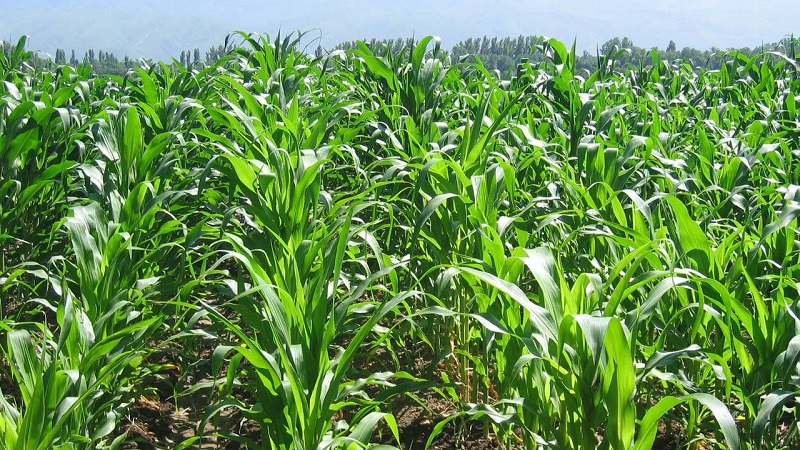
Here are some examplesentered in the State Register of Breeding Achievements and approved for use:
- Variety Anyutka with an average late ripening period, recommended for cultivation in the North Caucasus and Lower Volga regions. The average yield of normalized dry matter is 79-98 c / ha, depending on the region. Resistant to helminthosporiosis. Moderately affected by bacteriosis of ears and bladder smut. Susceptible to fusarium and stem moth.
- Variety Donskaya Vysokoroslaya 2 approved for the Middle Volga region. Medium late, average yield in terms of dry matter 151 c / ha.
- Hybrid Ladoga 191MV intended for cultivation in the Volgo-Vyatka, Central Black Earth, Middle Volga, Ural, West Siberian districts. Early maturing, the yield is from 54 to 106 kg / ha, depending on the district. Diseases of bladder smut, bacteriosis, fusarium disease are not observed in the ears. Resistance to damage by corn stalk moth is average.
- Mid-season hybrid Mashuk 355 MB recommended for cultivation in the Central Black Earth Region. Average collection of mass in terms of dry matter - 150 c / ha. Resistant to southern helminthosporiosis, susceptible to bacteriosis and fusarium on the cob. Severely damaged by the stem moth.
How corn for silage is grown
When growing corn, take into account its biological characteristics... It is a thermophilic annual plant. Seed germination occurs at +10 ºС.The warmer the soil, the more active the growth. The culture can withstand short-term frosts down to -3 ºС.
At the initial stages of development, the cereal successfully copes with the lack of moisture, tolerates heat. However, exposure to unfavorable factors during the flowering period significantly reduces the yield.
It is interesting:
How is the harvesting of corn for grain
Crop rotation rules
The culture will give a rich harvest in fields where cereals or legumes previously grew... Quite good predecessors are potatoes, melons and gourds.
It is not recommended, especially in arid regions, to plant corn after sugar beet and sunflower, which dry up the soil to a considerable depth.
Soil requirements and preparation
Suitable for the cultivation of silage corn black earth, loamy, sandy loam, sandy soils. Grain is demanding on the oxygen content in the soil and does not tolerate compacted soil. To prepare fields for sowing, the land is cultivated at different depths.
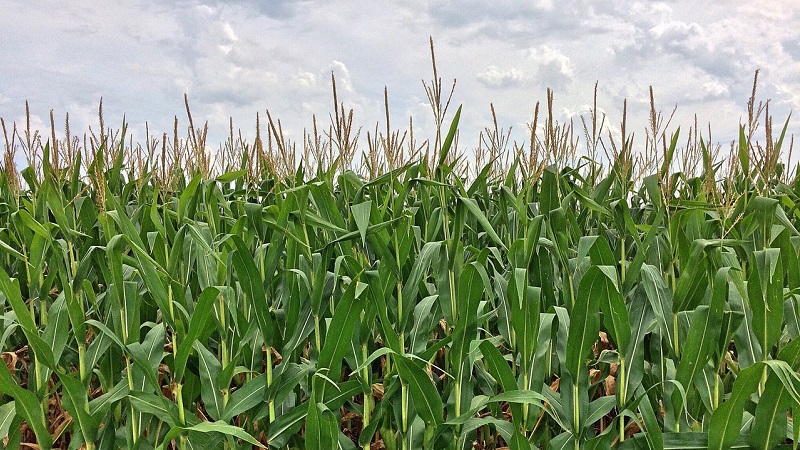
Autumn plowing begins after harvest from late August to early October. The depth of processing is 25-30 cm.
In the spring, around the beginning of April, the first harrowing is carried out to a depth of 5 cm, during April they do a second harrowing by 15 cm to undermine the weeds and cultivate the soil 8 cm deep.
Timing and frequency of landing
Sowing operations take place around the beginning of Maywhen the soil warms up to +12 ºС at the seeding depth (6-8 cm). On heavy clay soils, the planting depth is reduced to 4 cm.
In the fields, the width of the row spacing of corn is 65-70 cm. Seeding rate depending on the variety ranges from 70 to 120 thousand seeds per hectare; in adverse weather conditions, the number of seeds increases by 10%.
A week after sowing, harrow is carried out, it is done again on seedlings at the end of May when 4 - 5 pairs of leaves appear on the plant. The purpose of the procedure is to loosen the upper layers of the soil and remove weeds.
Care
For maximum yield Plants require timely fertilization, weed control, pest and disease control.
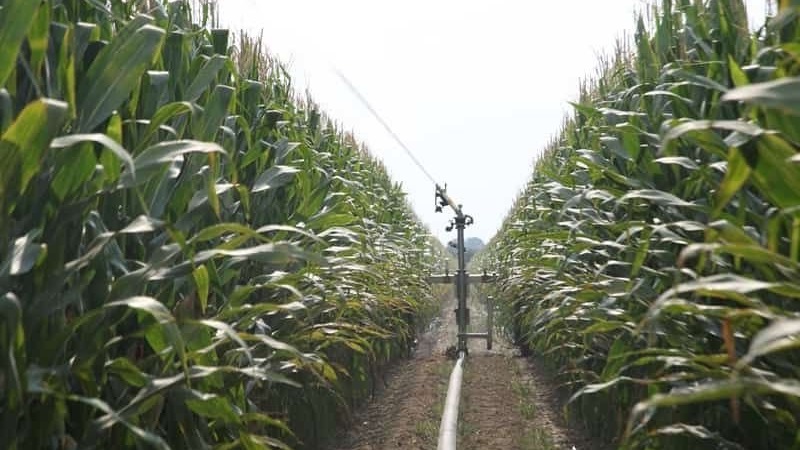
Fertilizers
When growing corn for silage, the main focus is on growing green mass. In this case, nitrogen is essential.
Nitrogen fertilizers are applied before sowing, then 4 - 6 weeks after germination. Phosphorus, potash and organic are embedded in the soil during autumn plowing.
Approximate fertilizer rates for mineral soils of medium fertility:
- nitrogenous - 50-70 kg / ha;
- phosphoric - 80-100 kg / ha;
- potash - 70-90 kg / ha;
- manure - 40-50 t / ha.
Herbicides
Herbicides are used to control weeds... The choice depends on the type of weeds and the growing season.
Preparations such as "Eradikan", "Alirox", are embedded in the soil before emergence. If a single treatment does not bring a result, it is allowed to spray plants in the phase of 3-5 leaves with "Titus", "Basis" or others.
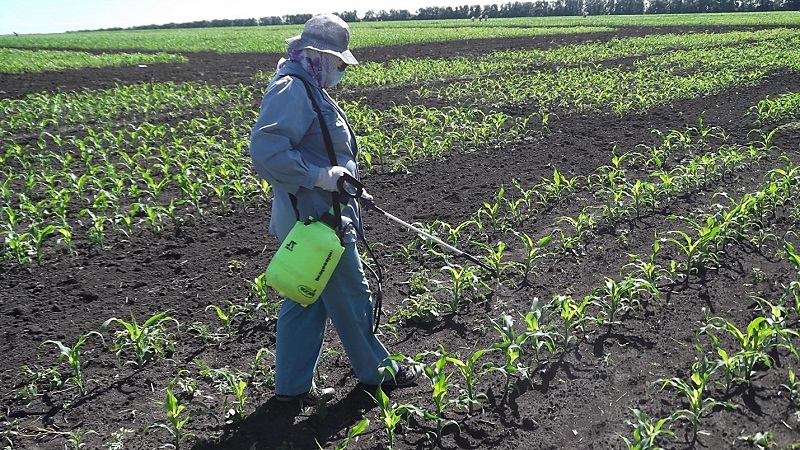
Pest and disease control
Most often corn is affected by Fusarium rot., bacteriosis of cobs, bladder smut, southern helminthosporiosis. Various fungicides are used to fight diseases. As a preventive measure, crop rotation, pre-sowing preparation of seeds, control of weeds-reserves of infection are used, resistant hybrids and varieties are planted.
The plant is under attack flies, corn moths, scoops, wireworms. Insecticides help eradicate parasites. The choice depends on the type of pest.
Read also:
Is there gluten in corn grits and flour and why is it dangerous?
Features of growing corn for silage
Corn is a high-carbohydrate crop and has some peculiarities for silage. To obtain a balanced feed, supplements of plants with a high protein content are necessary.For this, corn is grown in a mixture or striped with legumes (alfalfa, soybeans, lupine, horse beans).
Maize harvesting for silage
Harvesting corn for silage has its own characteristics... The main thing is not to delay the timing of feed preparation.
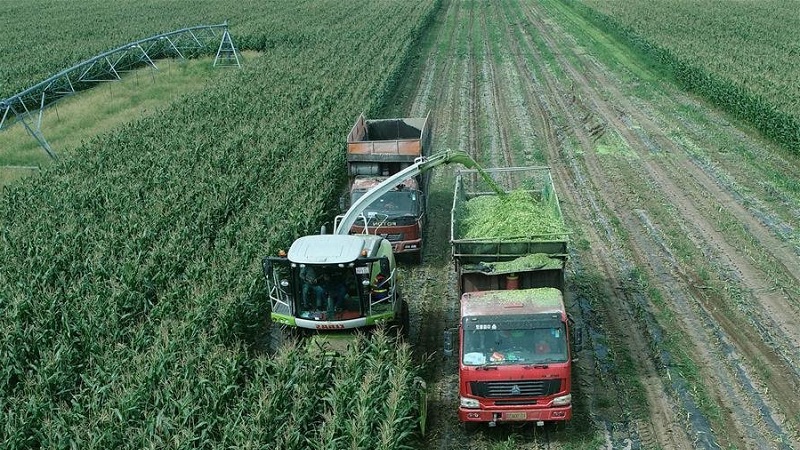
Term and its definition
Nutritional value, composition, silage capacity depend on the moment at which the green mass is harvested.
Corn has four stages of ripeness:
- Dairy begins 15-20 days after fertilization. When pressed against the grain, white juice is released.
- At the wax stage endosperm at first looks like a soft dough, then gradually thickens. It occurs about 26 days after the start of pollination.
- Vitreous - the grains dry out, have a crumpled appearance. The stage lasts from 36 to 48 days from the start of seed formation.
- Full ripeness characterized by hard grains with a bright color. The leaves and covers of the cob turn yellow. It usually occurs 2 months after pollination.
The most valuable properties are in silage from corn harvested at the end of the milk stage and before the end of the wax stage. ripeness of the cobs. During this period, the moisture content of the grains is 65-70%. The sugar content is already sufficient for the feed to have optimal acidity.
Important! When harvesting late-ripening varieties, it should be borne in mind that freezing deteriorates the quality of the silage.
Cleaning technology and equipment used
Prepare the field before the harvest: Make edge swaths and headlands. Next, determine the width of the corrals (6-12 times less than the length of the rut). The number of corrals is a multiple of the number of harvesting units. With a rut length of more than 1000 m, transverse transport routes are plowed every 500-600 m.
Trailed forage harvesters are used for harvesting silage corn. KS-1.8, KSS-2.6 and self-propelled KSK-100. The principle of operation of the machines is similar.
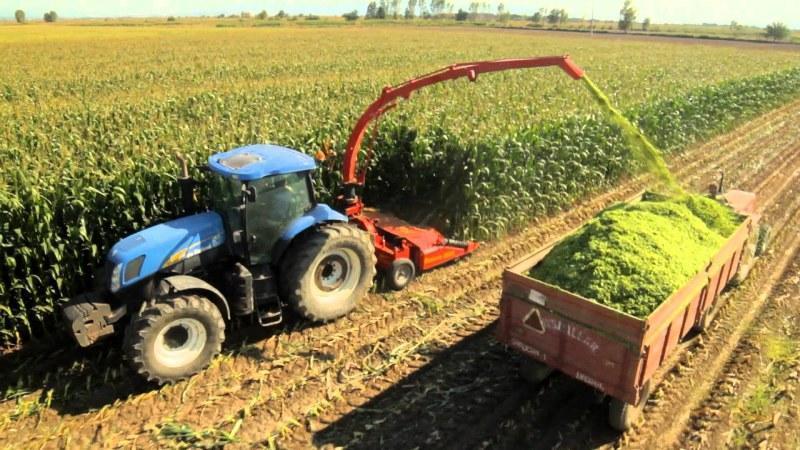
Cutting device cuts plants, the reel tilts the stems and places them on a conveyor that feeds the raw material to the shredder. The finely chopped mass is discharged through the silage chute into the body of a nearby vehicle or tractor truck.
Agrotechnical requirements
The quality of silage cleaning must meet these requirements:
- cutting height of stems - no more than 0.1 m;
- loss of green mass behind the harvester - no more than 1.5%;
- the degree of grinding - at least 70% of the particles must have a size of 2-4 cm;
- contamination of green mass with soil is not allowed.
Further storage and use
Trenches and barrow storage areas are used for corn silage.... Before laying the feed, the bottom of the structure is lined with straw. The green mass is unloaded into a trench or on a mound, mixed, leveled and tamped with a bulldozer. The thickness of the layer to be laid on a daily basis must be at least 0.7 m. Filling the structures with green mass takes 5-7 days. The height of the silo layer in the middle part is 5 m, after settling during storage - at least 4 m.
After laying, the storage is hermetically closed... Most often, the green mass is covered with a polymer film, covered with a layer of earth 5-8 cm high and straw 50-60 cm thick is laid. Silage ripening lasts 15-25 days.
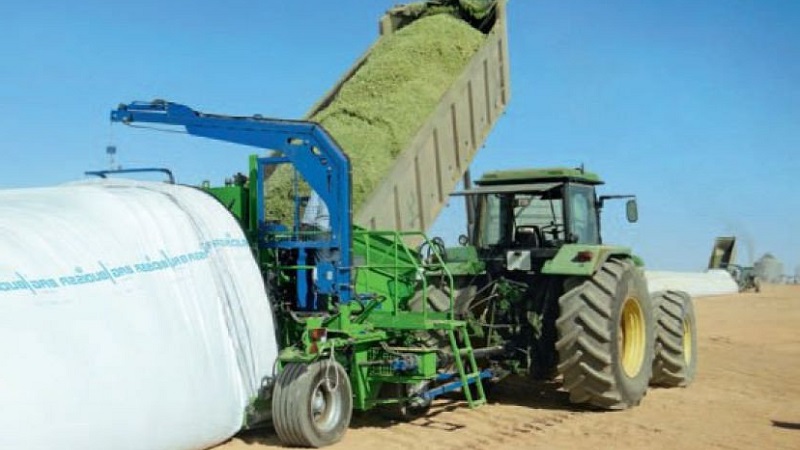
Silage is taken in vertical slices, which prevents contact with air and precipitation. Storing succulent feed in piles in a barnyard is not permitted. Already in a day, due to damage, it cannot be fed to animals.
Conclusion
Succulent, nutritious corn silage is the staple of the livestock diet in many livestock farms. Silage corn is not difficult to grow. Seeds are planted in well-loosened soil after the threat of frost has passed. Care consists in timely fertilization, weed control, diseases and pests. Collecting green mass is carried out at the stage of wax ripeness of the grains.
The food prepared during this period is the most nutritious. Properly prepared "green canned food" is sure to please your animals.